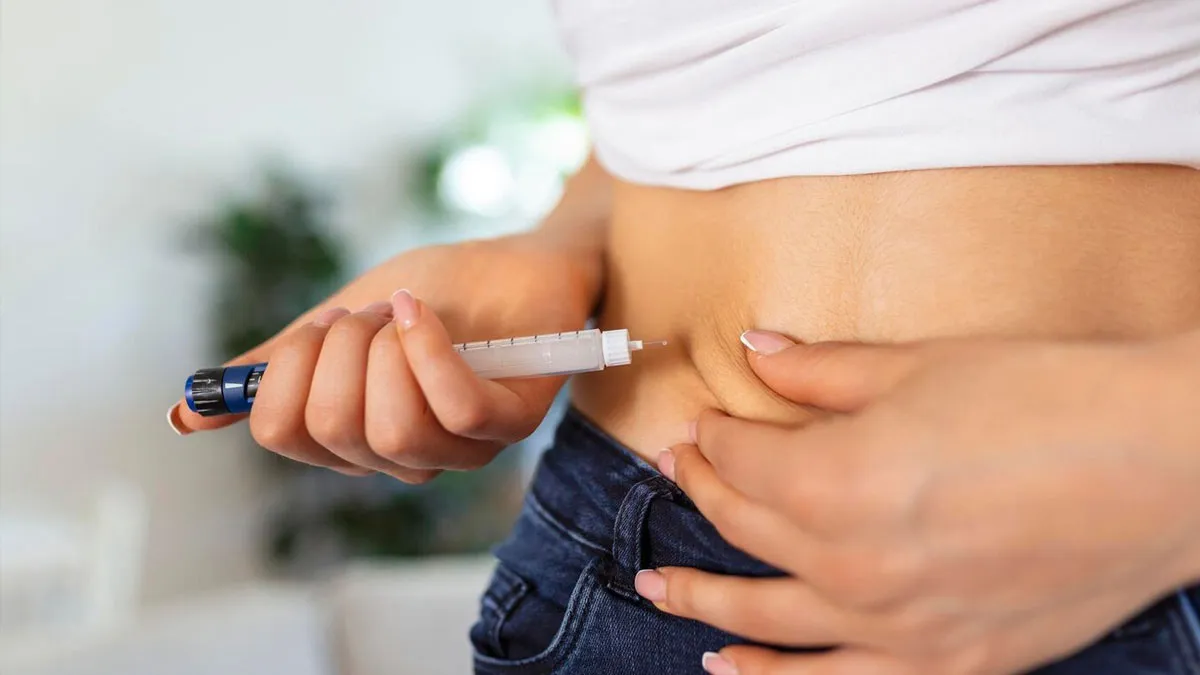
Insulin is a life-saving hormone for people with diabetes, especially those who require external insulin therapy to manage their blood sugar levels. But did you know there are six different types of insulin, each working at a different speed and duration?
Table of Content:-
Understanding how each type of insulin functions can help personalise diabetes treatment and improve overall glycaemic control. The OnlyMyHealth team interacted with Dr Anil Menon, Head of Endocrinology, DPU Super Speciality Hospital, Pimpri, Pune, to break down everything you need to know about the types of insulin and how doctors decide what's right for you.
Also Read: Type 1 Diabetes Diagnosed In Adulthood Tied To Higher Heart Disease And Death Risk: Study Finds
Six Main Types Of Insulin And How They Work

Dr Menon explained that insulin types differ based on how fast they start working, also referred to as onset, when they work the hardest, which is at their peak, and how long they last, which is the duration. Here's a quick overview:
Short-Acting Insulin (Insulin Regular)
- Onset: 20 minutes
- Peak: 2–4 hours
- Duration: 6–8 hours
Rapid-Acting Insulin (Lispro, Aspart, FiAsp)
- Onset: Within 5 minutes
- Peak: 1–2 hours
- Duration: 4–6 hours
Intermediate-Acting Insulin (NPH)
- Onset: 1–2 hours
- Peak: 4–6 hours
- Duration: 10–12 hours
Basal Insulin (Glargine, Detemir)
- Onset: 1–2 hours
- Peak: Minimal or none (provides a steady level)
- Duration: About 18 hours
Ultra-Long-Acting Insulin (Degludec)
- Onset: 1–2 hours
- Peak: Peakless
- Duration: Up to 30 hours
Pre-Mixed Insulin
A combination of short/rapid-acting and intermediate insulin, commonly given twice a day for ease of use.
Excitingly, Dr Menon mentioned that once-a-week insulin formulations may soon become available, offering even more flexibility.
Also Read: Can Cutting Carbs Improve Your Metabolism? Find Out Here
How Do Doctors Decide Which Insulin To Prescribe?

Insulin isn’t one-size-fits-all. Doctors consider multiple factors such as:
- Age and duration of diabetes
- Blood sugar control levels
- Patient lifestyle and ability to stick to meal timings
- Preferences, cost concerns, and willingness to take multiple doses
- Mode of administration (syringe vs. pen device)
For instance, pen devices are often preferred for older patients due to ease of use and portability. Also, if a patient is not comfortable taking multiple shots, doctors may opt for pre-mixed insulin for convenience.
Type 1 Vs. Type 2 Diabetes: Does Insulin Choice Differ?
According to Dr Menon, insulin choices differ depending on the type of diabetes you have. While Type 1 diabetes, which usually starts in younger individuals, often requires rapid-acting insulin to match irregular meal schedules, Type 2 diabetes may need a more individualised approach based on blood sugar levels, lifestyle, and other health conditions.
When Is It Time To Switch Insulin Types?
Changing insulin types may be necessary if someone:
- Struggles to maintain regular meal timings
- Experiences frequent low blood sugar (hypoglycaemia)
In such cases, rapid-acting insulin is often preferred over short-acting types because it's more flexible and less likely to cause hypoglycaemia.
Can Combining Insulins Improve Control?

The short answer is yes.
The most effective regimen for many involves a basal insulin (once daily) combined with short- or rapid-acting insulin before meals. This mimics the body's natural insulin release more closely and helps maintain stable glucose levels throughout the day.
Conclusion
Understanding the six types of insulin and when and why they’re used can empower patients to manage diabetes more effectively. With the right combination and proper guidance from your doctor, insulin therapy can be tailored to fit your life, not the other way around.
Also watch this video
How we keep this article up to date:
We work with experts and keep a close eye on the latest in health and wellness. Whenever there is a new research or helpful information, we update our articles with accurate and useful advice.
Current Version